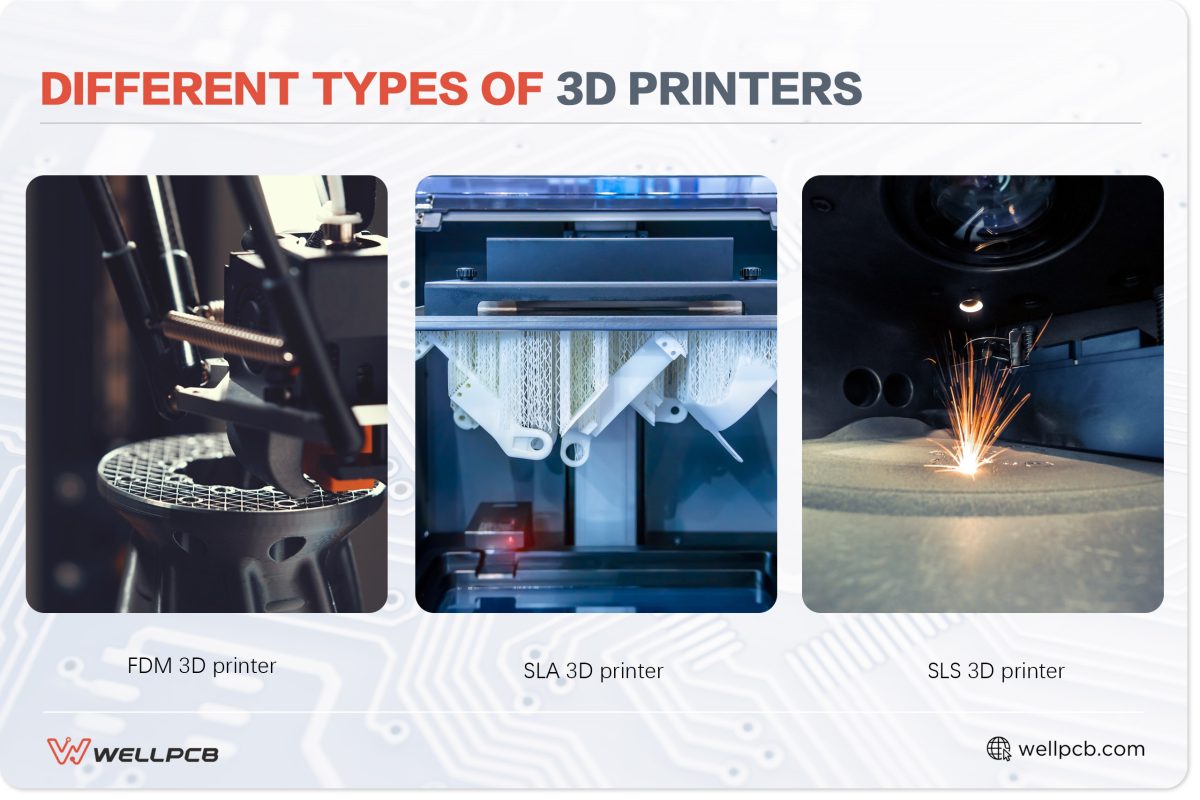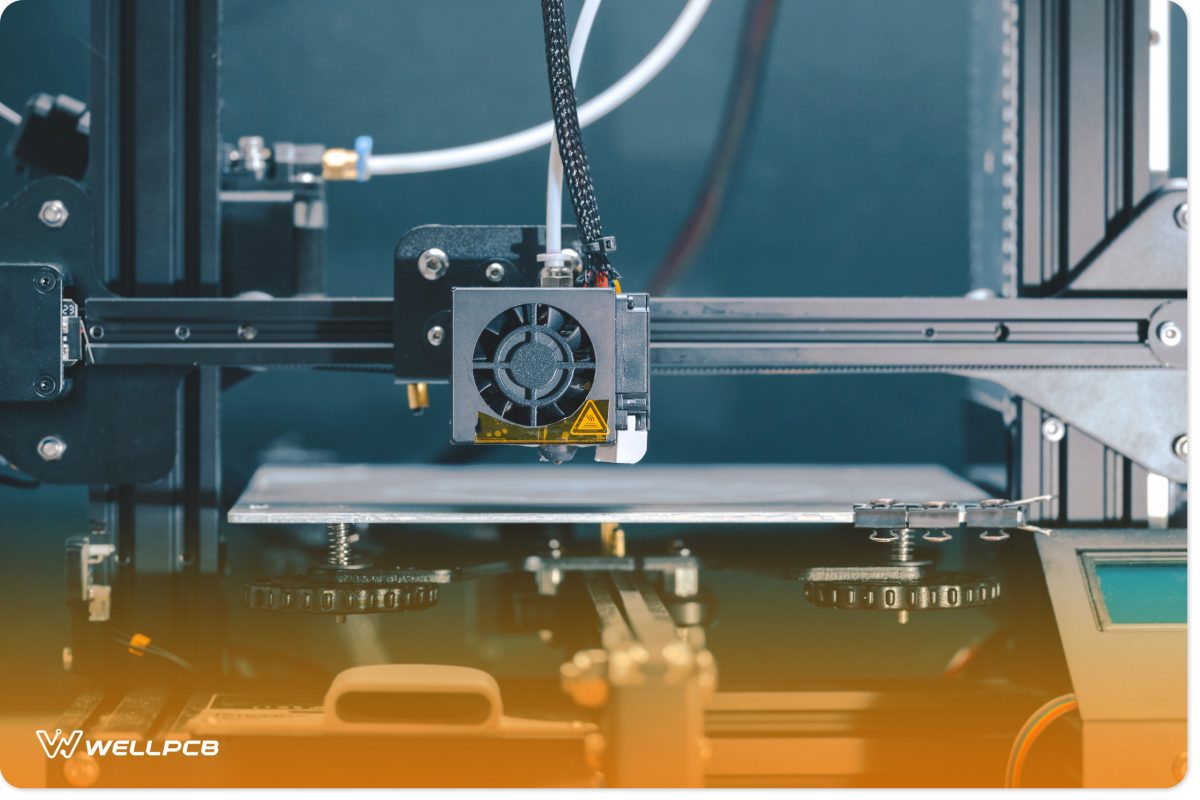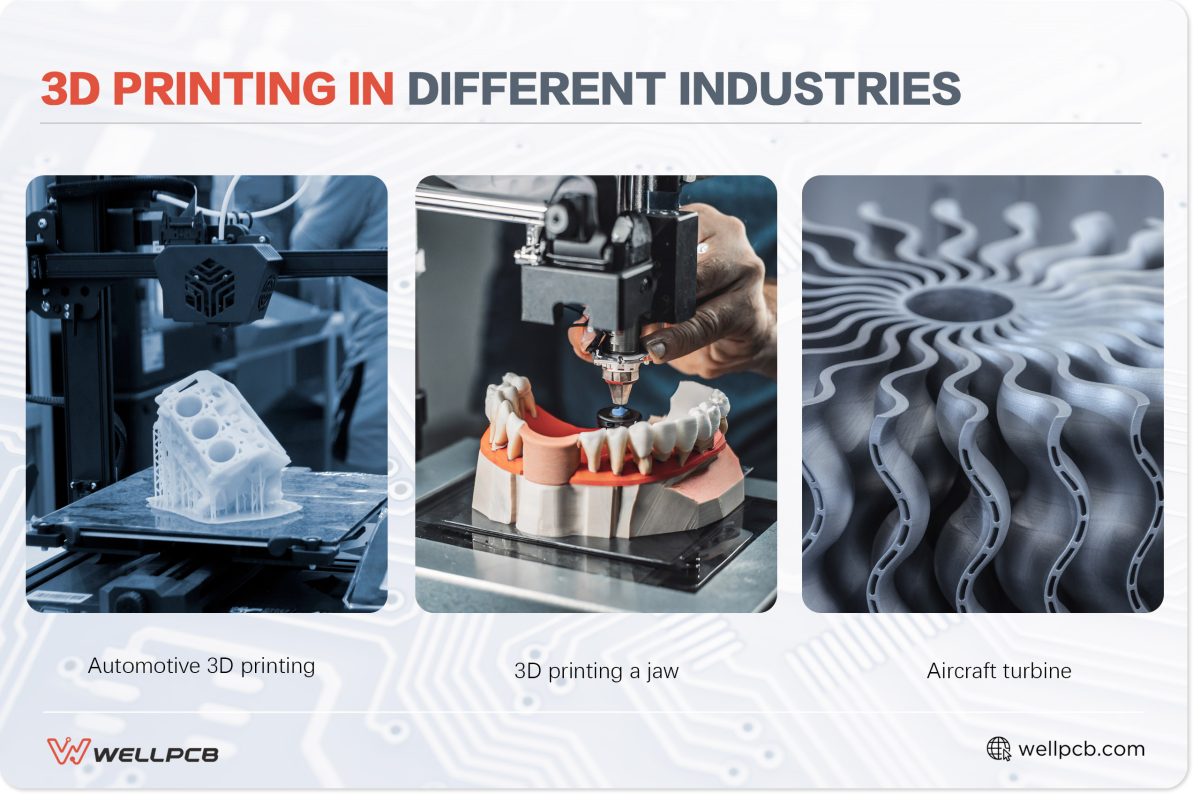Contents
- 1 What Are the Basics of 3D Printing?
- 2 How Does 3D Printing Work?
- 3 What Are the Benefits of 3D Printing for Businesses?
- 4 How Is 3D Printing Used in Different Industries?
- 5 How Do You Choose the Right 3D Printing Service Provider?
- 6 What Does the Future of 3D Printing in Business Look Like?
- 7 Conclusion
What Are the Basics of 3D Printing?
What is 3D Printing?
3D printing uses specialized printers to create objects directly from digital designs. Starting with a digital file that defines the object’s shape, the printer deposits materials—such as resin, plastic, or metal—layer by layer until the final product emerges.
What is the History of 3D Printing?
The origins of 3D printing date back to 1981, when Dr. Hideo Kodama introduced the idea of 3D printing technology via a rapid prototyping system.
In 1983, Charles Hull took the concept further by inventing stereolithography (SLA) and producing the first 3D-printed object.
Companies quickly adopted this innovation for precise prototype production.
3D printing technology saw significant improvements in 1988 when Carl Deckard invented Selective Laser Sintering (SLS).
The following year, Scott Crump created Fused Deposition Modeling (FDM). These breakthroughs enabled businesses to produce rigid products using 3D printing technology.
For instance, the Wake Forest Institute for Regenerative Medicine was able to print human bladder scaffolds in 1999.
By 2015, Desktop Metal introduced the world’s first office-friendly 3D metal printer, making metal part production more accessible and affordable.
How Does 3D Printing Work?

The Step-by-Step Process of 3D Printing
Design the Digital Model
First, a designer creates a 3D model using CAD software. The design file is optimized for 3D printing and exported as an STL file, which is compatible with 3D printers. The file is then imported into slicing software.
Slicing
The slicing software divides the model into thin horizontal layers and generates a G-code file. This file contains detailed instructions for the printer on how to construct each layer.
Printing
An operator places the appropriate material into the printer, which then reads the G-code and starts printing. Layers of the material are deposited in succession until the object is fully formed.
Post-Processing
The finished product may require touch-ups, such as smoothing the edges, heat treatment, or adding color to achieve the desired finish.
What Are the Different Types of 3D Printing Technologies?
Fused Deposition Modeling (FDM)
FDM is the most widely used 3D printing technology today. It works by extruding thermoplastic filaments via a hot nozzle, building objects layer by layer.
- Advantages: High level of detail, smooth surface finishes, capable of producing flexible and transparent parts.
- Limitations: More expensive than FDM, requires post-processing for curing and support removal.
- Applications: Dentists utilize SLA printing to produce dental molds, implants, and temporary restorations.
Stereolithography (SLA)
SLA uses a laser to cure liquid resin into solid objects as it prints. This technology excels at producing objects with fine details and smooth finishes.
- Advantages: High level of detail, smooth surface finishes, capable of producing flexible and transparent parts.
- Limitations: More expensive than FDM, requires post-processing for curing and support removal.
- Applications: Dentists utilize SLA printing to produce dental molds, implants, and temporary restorations.
Selective Laser Sintering (SLS)
SLS uses a laser to fuse powdered materials into solid structures. It can produce durable, working parts that are ideal for end-use applications.
- Advantages: Uses a variety of materials (metals, ceramics, nylon), produces durable and complex parts without the need for support structures.
- Limitations: High cost of materials and equipment, requires post-processing due to rough surface finishes, longer production and cooling times.
- Applications: The aerospace industry uses SLS to manufacture lightweight, rigid aircraft components, reducing weight and improving fuel efficiency.
What Are the Benefits of 3D Printing for Businesses?

3D printing offers significant long-term benefits for many businesses, including greater efficiency, reduced costs, and more opportunities for customization.
How Does 3D Printing Accelerate Prototyping and Product Development?
Thanks to 3D printing, companies are able to produce prototypes in a matter of hours or days, rather than weeks or months. This technology is quicker and more convenient than other prototyping techniques, such as injection molding, casting, or CNC machining.
It’s also easier for designers to test, update, and reproduce prototypes using 3D printing, as they don’t rely on tooling. This means they can create several iterations in a short period of time.
Real-world examples of 3D printing include:
- Adidas: Adidas uses 3D printing to produce its Futurecraft 4D shoes, which take just ten hours to complete. This process enhances midsole designs, offering customers a customized fit and cushioning, and brings the product to market faster than traditional methods.
- Volkswagen: Volkswagen uses 3D printing for prototyping and testing parts such as engine components. By adopting this technology, the auto company reduced parts production time by up to 90%.
- Boeing: Boeing uses 3D-printed aircraft parts like brackets and air ducts for prototyping. Instead of taking months, Boeing can produce smaller, simpler prototype parts in just 30 hours and more complex parts in a matter of days.
How Can 3D Printing Help Save Costs and Improve Efficiency?
Minimizing Waste
3D printing uses only the essential material needed to create objects, significantly reducing waste. This method can slash prototyping costs by 70% and eliminate the need for tooling—reducing material wastage by up to 90%.
On-Demand Production
By using 3D printing, companies can reduce inventory storage by creating parts as needed. This approach saves on excess inventory and maintenance costs, decreasing inventory costs by up to 30%. It also shortens lead times, allowing manufacturers to meet market demands more quickly.
Reducing Material Expenses
3D printing lowers material costs by producing multiple parts as one design. Companies can print complex components as one piece instead of assembling multiple components, effectively reducing the amount of material required for production.
How Does 3D Printing Empower Customization and Innovation?
3D printing overcomes the limitations of traditional manufacturing processes, enabling businesses to innovate and offer customized products.
- Electronics: SLA 3D printing is used to produce a wide range of consumer electronics, such as customized earbuds and phone cases tailored to individual preferences.
- Medical: The technology fabricates medical devices like prosthetics and implants that are customized to a patient’s specific needs and anatomy, leading to improved comfort and better patient outcomes.
- Automotive: 3D printing is accelerating the development of autonomous vehicles by streamlining the production of customized sensor mounts.
How Is 3D Printing Used in Different Industries?

3D printing has become a practical solution across the automotive, healthcare, and aerospace industries, significantly shortening lead times and simplifying part production processes.
How Is 3D Printing Transforming the Automotive Industry?
- Rapid Prototyping: Manufacturers in the automotive industry use 3D printing to create prototypes faster than traditional methods, allowing for quicker iteration and thorough testing of parts and designs.
- Tool Fabrication: Automotive companies use 3D printing to fabricate tools for assembly lines, helping with alignment, positioning, and component quality control during production.
- Lightweight Parts Production: By using durable polymers and metals, 3D printing produces high-performance, lightweight vehicle parts. This improves fuel efficiency and reduces vehicle weight.
Bugatti manufactures titanium brake calipers using 3D printing, achieving significant weight reduction and increased rigidity.
How Is 3D Printing Revolutionizing Healthcare and Medical Devices?
- Medical devices: 3D printing speeds up the production of medical devices, including implants and surgical instruments that are tailored to individual patients. Using this technology, businesses are saving significant costs on small-batch devices.
- Prosthetics: Customized prosthetics can be created easily with 3D printing. This makes them more cost-friendly and lightweight for a greater number of patients. Additionally, prosthetics can be created quickly for younger, growing patients who need constant adjustments.
- Bioprinting tissues: Using bio-inks, living cells, and scaffold materials, 3D printing can be used to form human-like tissues, reducing the need for donors in tissue repairs and transplants.
e-NABLE produces affordable prosthetic hands for children in developing countries, who would otherwise not have access to such advanced treatment. Their ongoing work has drastically improved the quality of life for countless patients.
What Role Does 3D Printing Play in the Aerospace Industry?
The aerospace industry is always looking for new ways to produce lighter aircraft for better performance and fuel efficiency. 3D printing makes this possible, as it’s easier to produce lighter parts with complex geometries, like internal channels and lattice structures. This enhances durability, improves fuel efficiency, and reduces weight.
- Reduced Lead Times: 3D printing accelerates component production by eliminating the need for special equipment, molds, and complicated manufacturing processes.
- Cost-Effective Customization: The technology allows for the creation of customized components that meet specific requirements without the high costs associated with traditional retooling.
How Do You Choose the Right 3D Printing Service Provider?
Selecting a company for your 3D printing needs involves careful consideration to ensure the best outcome for your project. The following considerations can help put you on the right path toward making the right choice.
What Key Considerations Should You Keep in Mind?
- Technology Capabilities
- Proficiency in 3D printing techniques like FDM, SLS, and SLA.
- Comprehensive post-processing services.
- Advanced equipment for resolution and precision.
- Ability to handle both prototypes and large production runs.
- Material Options
- Availability of metals, resins, plastics, and composites.
- Access to specialized materials for high-temperature applications.
- Capability to source custom materials if needed.
- Industry Experience
- Expertise in sectors like aerospace, electronics, automotive, and healthcare.
- Familiarity with industry standards and regulatory requirements.
WellPCB is a 3D printing service provider with extensive experience across various industries. The company is committed to thorough quality inspection and uses advanced 3D printing equipment to reliably produce high-quality products.
Questions to Ask a 3D Printing Service Provider
- Do you have case studies or examples of relevant projects?
- What 3D printing technologies and materials do you use?
- What are expected lead time for production runs and prototypes?
- Do you offer post-production services?
- Can you assist with design optimization?
- Is your production process scalable to meet larger demands?
- What are your prices for 3D printing services?
What Does the Future of 3D Printing in Business Look Like?
The future of 3D printing in business looks bright, promising better cost efficiency, faster production, and more affordable materials.
Emerging Trends in 3D Printing
Material Advancements
Innovations in highly durable, heat-resistant polymers are driving the industry forward.
Biocompatible materials, in particular, are making a significant impact, enabling the production of scaffolds for tissue regeneration, bone growth, and implants.
Other newly developed materials include composites, metals, and ceramics.
Businesses in those fields can form partnerships with 3D printing experts and materials scientists to develop custom materials for specific applications.
By investing in research and development for new materials, businesses can enhance their processes and product offerings.
Speed
Emerging technologies like Continuous Liquid Interface Production (CLIP) and Multi Jet Fusion (MJF) are dramatically improving printing speed.
These advances enable businesses to mass-produce products at a faster rate, facilitating rapid prototyping and demand-driven production.
Businesses can prepare for this trend by partnering with firms that focus on 3D printing solutions, or by integrating 3D printing into their supply chain management.
Cost-Efficiency
As 3D printing becomes more affordable, small and medium-sized businesses can invest in the required software, materials, and printers.
As 3D printing only uses the essential material to produce an object, it’s less wasteful and more cost-effective.
As such, businesses of all sizes should assess the potential cost savings of transitioning to in-house 3D printing.
What Are the Long-Term Business Implications of 3D Printing?
In the long term, 3D printing has the potential to transform businesses by decentralizing production, disrupting supply chains, and increasing cost efficiency through reduced material waste.
The automotive and healthcare industries, in particular, can capitalize on 3D printing, as the technology offers broad opportunities for product customization.
Moreover, 3D printing accelerates production speeds, leading to faster innovation and shorter time-to-market.
By leveraging 3D printing, businesses can rapidly create and test prototypes. They can also reduce production costs for customized or low-volume parts, and explore on-demand production to better manage supply-chain disruptions.
Conclusion
3D printing offers significant benefits for businesses of all sizes, including cost savings, faster production, and a quicker time-to-market. As such, the technology is ideal for long-term business growth.
Now that you’re familiar with the fundamentals of 3D printing, consider exploring solutions for your next project. At WellPCB, we offer expert 3D printing services—and can deliver high-quality printed objects tailored to your exact needs.
If you have any questions, contact us for more information.





